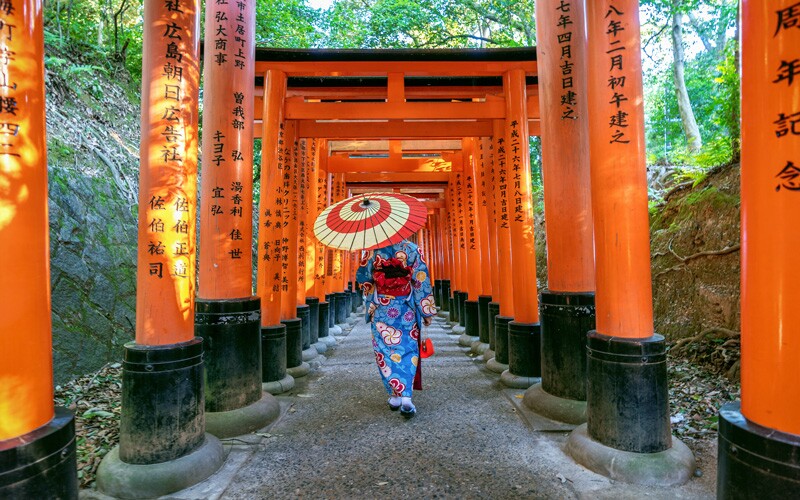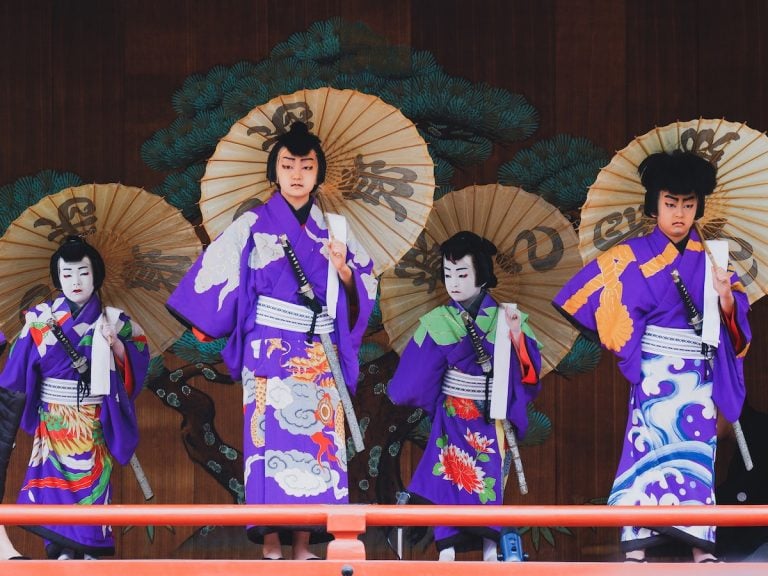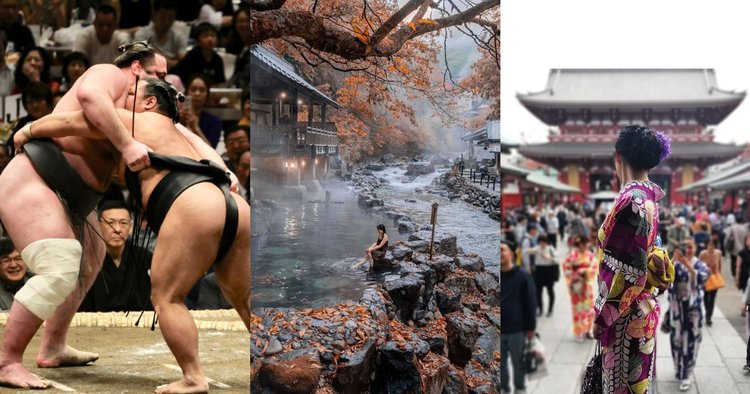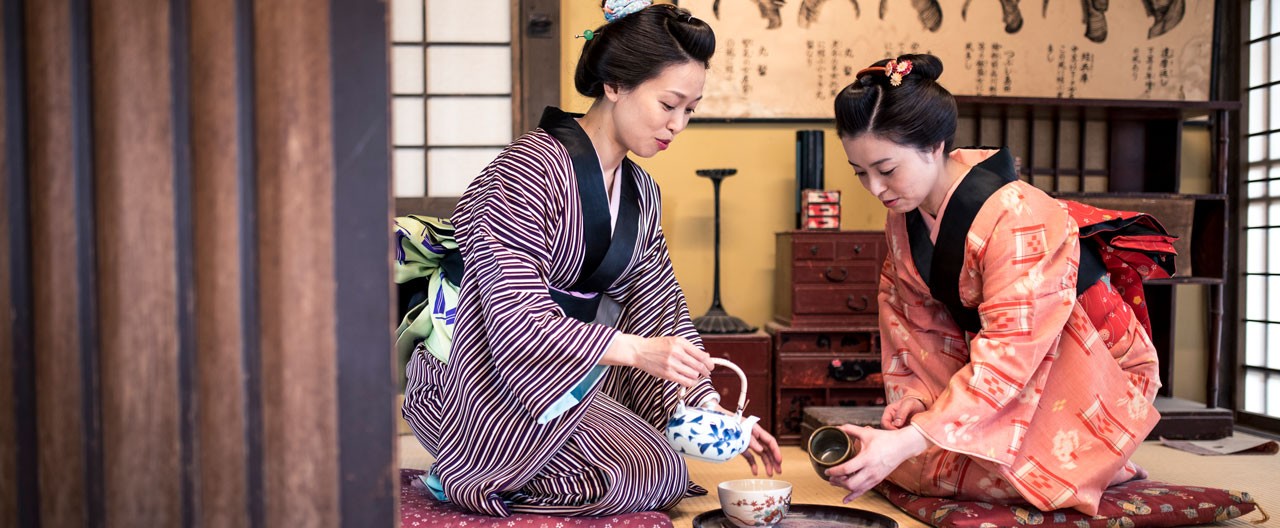Win a Free Trip to Japan!
Experience cherry blossoms and ancient temples
Japan’s rich tapestry of festivals and traditions offers an unparalleled insight into Japan culture. With vibrant celebrations held throughout the year, these events reflect the country’s unique heritage and communal spirit. From the colorful Matsuri parades to solemn Buddhist observances, each festival highlights crucial aspects of Japanese identity. Visitors can immerse themselves in the beauty and significance of these events, enhancing their understanding of the traditions that shape everyday life in Japan. As the seasons change, so too do the festivities, providing endless opportunities to experience this captivating culture firsthand.
Overview of Japanese Festivals
Japan is renowned for its vibrant and diverse festivals, known as matsuri, which showcase the rich tapestry of Japan culture. These celebrations vary significantly from region to region, reflecting local history, customs, and religious beliefs. Here’s a brief overview of what makes these festivals so special:
- Variety of Festivals: Japan hosts thousands of festivals, each with its unique theme and significance. From religious observances to seasonal harvest celebrations, there’s a festival for every occasion.
- Cultural Significance: Matsuri fosters a sense of community and belonging. They often involve religious rituals that honor deities, spirits, and ancestors, deeply rooted in Japan’s Shinto and Buddhist traditions.
- Time of Year: Festivals occur throughout the year, aligned with the changing seasons. Spring welcomes cherry blossom festivals, summer features lively firework displays, while autumn highlights harvest celebrations.
- Participation and Celebration: Many festivals encourage public participation, whether through traditional dance, music, or even sports. This communal aspect enhances the spirit of Japan culture, uniting people through shared joy.
- Local Flavors: Festivals also emphasize local cuisine. Street food stalls and traditional delicacies play a vital role, enabling visitors to experience the diverse tastes of each region.
By engaging in these matsuri, one gains a profound understanding of the historical and cultural values that shape Japan culture today.

Importance of Festivals in Japanese Culture
Festivals play a vital role in Japan culture, reflecting the nation’s rich heritage and communal spirit. They serve as a means of preserving traditions, connecting communities, and celebrating seasonal changes. Here are several reasons why festivals are essential in Japan:
- Cultural Preservation: Festivals help maintain age-old customs, rituals, and beliefs. Through activities like traditional dance, music, and art, participants pass down knowledge to future generations.
- Community Bonding: These events foster a sense of belonging. Locals come together, creating strong social ties and encouraging collaboration through communal activities.
- Spiritual Significance: Many festivals originate from Shinto or Buddhist beliefs. They often involve rituals to honor deities or ancestors, reflecting the deep spiritual connection within Japan culture.
- Economic Impact: Festivals attract both domestic and international tourists, boosting local economies. Shops, eateries, and artisans benefit greatly from the influx of visitors.
| Aspect | Festivals | Everyday Life |
|---|---|---|
| Community Involvement | High – Active participation and volunteering | Moderate to Low – Often solitary |
| Cultural Expression | Rich – Vibrant displays of traditions | Limited – Routine activities |
| Spiritual Engagement | Deep – Connection to deities and nature | Minimal – Rarely centered on rituals |
| Economic Boost | Significant – Tourists and local spending | Steady – Regular transactions |
Ultimately, festivals exemplify the heart of Japan culture, blending reverence, community, and celebration into vibrant, can’t-miss experiences.
Seasonal Festivals Throughout the Year
Japan’s seasonal festivals reflect the country’s rich traditions and vibrant Japan culture. Each season brings unique celebrations that resonate with the rhythms of nature and community. Here’s an insightful look into seasonal festivals throughout the year:
Spring Festivals
- Hanami (Cherry Blossom Viewing): Celebrated in March and April, this festival involves picnicking under blooming cherry trees. It symbolizes renewal and the fleeting nature of life.
Summer Festivals
- Obon: Taking place in August, Obon honors the spirits of ancestors. Families return to their hometowns to celebrate with lanterns and festive dances, showcasing the significance of family in Japan culture.
Autumn Festivals
- Tsukimi (Moon Viewing): Held in September, this festival celebrates the harvest moon. People display offerings of rice dumplings and seasonal produce, signifying gratitude for the earth’s bounty.
Winter Festivals
- Sapporo Snow Festival: In February, this renowned event showcases intricate ice and snow sculptures. It reflects the beauty and creativity inherent in Japan culture and attracts visitors worldwide.
Engaging in these seasonal festivals allows visitors to appreciate the deep-rooted customs embedded in Japan culture, fostering a sense of connection with the local communities and seasonal changes.
Annual Matsuri: A Deep Dive
Matsuri, or festivals, hold a prominent place in Japan culture, showcasing the vibrant traditions and communal spirit that characterize the nation. Each annual matsuri offers a unique glimpse into Japan’s rich heritage, providing both locals and visitors the chance to engage in time-honored rituals and celebrations.
Key Highlights of Annual Matsuri:
- Diverse Themes: Each matsuri often reflects local history or mythology; popular themes include agriculture, seasonal changes, and religious practices.
- Vivid Parades: Participants dress in traditional clothing, showcasing stunning floats adorned with lanterns and decorations.
- Cultural Performances: Expect traditional music and dance performances that celebrate Japan’s historical narratives.
Popular Annual Matsuri:
| Matsuri Name | Location | Time of Year | Unique Features |
|---|---|---|---|
| Gion Matsuri | Kyoto | July | Grand procession of floats |
| Nebuta Matsuri | Aomori | August | Illuminated floats and fireworks |
| Tanabata Matsuri | Nationwide | July | Wishes written on colorful strips |
Incorporating elements of both Shinto and Buddhist beliefs, these festivals reinforce community bonds and keep historical practices alive. Attending a matsuri allows you to immerse yourself in Japan culture, experience the local community spirit, and witness stunning artistic expressions! So don’t miss out on this vibrant tapestry of tradition when visiting Japan.

Unique Traditions of Shinto Shrines
Shinto shrines are a vital aspect of Japan culture, representing a harmonious blend of spirituality and local traditions. These sacred places hold deep significance and are often associated with unique customs that visitors should experience. Here are some key traditions associated with Shinto shrines:
- Purification Rituals (Temizu): Visitors often cleanse themselves at the temizuya, a water basin at the shrine entrance. This act symbolizes the purification of one’s spirit before entering the sacred space.
- Offering Prayers (Nehan): Worshippers typically toss coins into the offering box and bow twice, clap twice, and then bow once more to show respect to the kami (spirits).
- Seasonal Festivals (Matsuri): Each shrine has its own seasonal matsuri, characterized by specific ceremonies, dance performances, and processions that honor local deities.
- Shinto Weddings: Many couples choose Shinto rituals for their marriage, donning traditional attire such as the kimono, which underscores the connection between Japan culture and spiritual practices.
- Omamori: Visitors often purchase these protective charms at shrines. Each omamori offers unique blessings, such as health, success, or safe travels, tying personal intentions to the broader fabric of Japan culture.
Understanding these traditions provides a richer perspective on Shinto shrines and their role in shaping the diverse tapestry of Japan culture. Embracing these customs offers insights into the heart of Japan, where each shrine tells its own story through unique practices.
Buddhist Celebrations in Japan
Buddhism plays a significant role in Japan culture, influencing various aspects of daily life and traditions. The country celebrates several noteworthy Buddhist festivals that attract both locals and tourists. Here are some key celebrations:
- Obon: One of the most important Buddhist festivals, Obon honors deceased ancestors. This three-day celebration involves returning to family graves, performing traditional dances (Bon Odori), and lighting lanterns to guide spirits back home.
- Hanamatsuri: Celebrated on April 8, Hanamatsuri, or the Flower Festival, marks the birth of Buddha. Temples adorn Buddha statues with flowers and offer sweet tea representing the nectar poured over the infant Buddha.
- Shaka Sōgatsu: Celebrated on January 1st, this festival honors the birthday of Shakyamuni Buddha. It includes special rituals and offerings in temples that symbolize renewal and hope for the new year.
| Festival | Date | Key Activities |
|---|---|---|
| Obon | Mid-August | Lantern lighting, traditional dances |
| Hanamatsuri | April 8 | Flower offerings, sweet tea rituals |
| Shaka Sōgatsu | January 1 | Special offerings, prayers for the new year |
By participating in these celebrations, visitors can experience the rich tapestry of Japan culture while gaining a deeper understanding of how Buddhism has shaped Japanese values and customs. Thus, the reverence for life and the connection to ancestors come alive during these significant festivities.
Cultural Significance of Cherry Blossom Matsuri
The Cherry Blossom Matsuri, or Hanami, is a quintessential element of Japan Culture that draws both locals and tourists alike to experience its breathtaking beauty. Celebrated in spring, this festival highlights the fleeting nature of the cherry blossoms, symbolizing renewal and the transient nature of life.
Key Aspects of Cherry Blossom Matsuri:
- Aesthetic Appreciation: The sight of cherry blossoms in full bloom showcases the delicate beauty of nature, encouraging people to reflect on its significance.
- Cultural Reflection: Hanami fosters a deeper understanding of Japan Culture as it connects society through shared experiences under blooming trees.
- Social Gatherings: Families and friends gather for picnics, highlighting community ties and cultural heritage.
Comparison of Cherry Blossom Matsuri:
| Aspect | Hanami (Cherry Blossom Viewing) | Other Seasonal Matsuri |
|---|---|---|
| Timing | Spring (March-April) | Varies (Summer/Winter) |
| Main Attraction | Cherry blossoms | Local deities, traditions |
| Atmosphere | Tranquil and reflective | Festive and energetic |
| Activities | Picnicking, photography | Parades, rituals |
The Cherry Blossom Matsuri not only celebrates nature’s beauty but also embraces friendship, appreciation, and the essence of Japan Culture. By participating in this tradition, visitors gain insight into the values and philosophical reflections that underpin Japanese society.

Food and Drink Traditions During Festivals
Food and drink play an essential role in Japan culture, especially during festivals. These culinary traditions not only offer delicious flavors but also reflect the cultural significance of the celebrations.
Festival Foods:
- Yakitori: Grilled chicken skewers often enjoyed at Matsuri.
- Takoyaki: Ball-shaped snacks filled with diced octopus, commonly found at street stalls.
- Dango: A sweet rice dumpling skewered on sticks, traditionally eaten during hanami (cherry blossom viewing).
- Naritake: Fried fish cakes, especially popular during seaside festivals.
Beverages:
- Sake: This traditional rice wine is served at nearly every festival, symbolizing celebration and purification.
- Matcha: Whisked green tea enjoyed during festivals, showcasing Japan’s tea culture.
- Ramune: A refreshing carbonated drink with a unique bottle design, widely loved by festival-goers.
Comparison of Seasonal Festival Foods:
| Festival Type | Commonly Served Dishes | Beverage Pairing |
|---|---|---|
| Spring (Hanami) | Sakura mochi, dango | Matcha |
| Summer (Obon) | Cold noodles (soba), yakitori | Sake |
| Autumn (Moon Viewing) | Tsukimi dango, sweet potatoes | Umeshu (plum wine) |
| Winter (New Year) | Osechi ryori (traditional New Year food) | Zoni (mochi soup) |
In Japan culture, food not only satiates hunger but also unites communities and strengthens ties through shared culinary experiences during festivals. Each bite tells a story, making food an integral part of any celebration.
Traditional Attire Worn at Celebrations
In the vibrant tapestry of Japan culture, traditional attire plays a pivotal role during festivals and celebrations. Attending these events, you’ll encounter diverse garments that not only reflect the nation’s rich heritage but also enhance the festive atmosphere. Here are some notable traditional outfits:
- Kimono: A symbol of elegance, the kimono is often worn by both men and women. During festivals, kimonos feature bright colors and intricate designs. Women may accessorize with an obi (a wide belt) and haneri (collar), while men typically wear simpler styles.
- Yukata: This lighter, informal version of the kimono is popular during summer festivals. Typically made of cotton, yukatas are easy to wear and are usually adorned with playful patterns. It’s common to see attendees wearing them while enjoying fireworks or attending hanami (flower viewing) parties.
- Happi: A traditional coat, the happi is often worn by festival participants, especially during matsuri. This short jacket is usually emblazoned with family or organizational crests, signifying unity and pride.
- Geta: Traditional wooden sandals, known as geta, complete many outfits. They elevate the wearer and add a unique aesthetic suitable for walking on various terrains during outdoor festivals.
Experiencing the traditional attire enhances your immersion into Japan culture and allows you to appreciate the symbolism and artistry behind each garment during celebrations.
Experiencing Festivals: Tips for Visitors
Experiencing festivals in Japan offers a deep insight into the vibrant Japan Culture. To make the most of your visit, consider the following tips:
- Plan Ahead: Research festival dates and locations before your trip. Major festivals often attract large crowds, so booking accommodations in advance is essential.
- Engage with Locals: Embrace the opportunity to meet local residents. They can provide valuable insights and may even invite you to participate in traditional activities.
- Dress Appropriately: Wear traditional attire, such as a yukata, to immerse yourself in the experience. Many festivals encourage participants to dress in vibrant clothing, reflecting the festive atmosphere.
- Try Local Cuisine: Festivals often showcase unique food stalls. Sample local delicacies like takoyaki, yakitori, and festival sweets, enhancing your appreciation of Japan Culture.
- Capture Moments Respectfully: While photography is important, always seek permission before taking pictures of locals or sacred sites. This respect for tradition is vital in Japanese society.
- Be Open to New Experiences: Participate in workshops or rituals. Engaging in activities like making origami or learning a traditional dance will deepen your understanding of Japan Culture.
By following these tips, you can enjoy a fulfilling festival experience that showcases the rich tapestry of Japan Culture.
Frequently Asked Questions
What are some of the most famous festivals in Japan?
Japan is renowned for its vibrant festivals, also known as ‘matsuri’, which reflect the country’s rich culture and history. Some of the most famous festivals include the Gion Matsuri in Kyoto, celebrated every July with stunning floats and traditional costumes; the Awa Odori in Tokushima, an engaging dance festival held in August; and the Sapporo Snow Festival, showcasing incredible snow sculptures every February. Each festival offers unique experiences and insights into Japanese customs, making them unmissable for visitors.
When is the best time to experience Japanese festivals?
The best time to experience Japanese festivals largely depends on the specific festival you wish to attend. Spring, particularly April during cherry blossom season, features numerous hanami (flower viewing) parties. Summer sees a surge in festivities, highlighted by the Gion Matsuri in July and various fireworks shows, while autumn brings harvest festivals celebrating seasonal produce. Winter offers the Sapporo Snow Festival in February. Planning your visit around these periods allows you to immerse yourself in the lively atmosphere and local traditions.
What are some traditional Japanese customs practiced during festivals?
During Japanese festivals, several traditional customs are observed that enrich the cultural experience. Participants often wear yukatas, lightweight cotton kimonos, as a nod to historical attire. Rituals such as purification with water, offerings at shrines, and engaging in folk dances enhance the festival atmosphere. Food stalls featuring local delicacies like takoyaki, yakitori, and sweet rice cakes are prevalent, encouraging communal enjoyment. Additionally, fireworks displays, lantern processions, and parades featuring floats embody the festive spirit, making these customs integral to the celebrations.
Are there any unique regional festivals in Japan?
Yes, Japan is home to numerous unique regional festivals that highlight local customs and traditions. For instance, the Nebuta Matsuri in Aomori showcases vibrant floats made of brightly colored paper depicting mythological figures. The Takayama Matsuri, held in Takayama, features ornate floats with intricate carvings and traditional puppet shows. In contrast, the Jidai Matsuri in Kyoto commemorates historical events with a grand procession of individuals dressed in costumes representing different eras of Japanese history. These festivals provide a glimpse into the diverse cultural heritage found across the country.
How can I participate in a Japanese festival as a tourist?
As a tourist, participating in a Japanese festival is an excellent way to experience the local culture first-hand. To join in the festivities, you can wear a yukata or other traditional attire, which many rental shops offer for visitors. Arriving early can help you secure the best viewing spots for parades or events. Engaging with local vendors at food stalls, participating in games, and learning traditional dances or rituals will deepen your experience. Additionally, being respectful of customs and following any guidelines from festival organizers will enhance your enjoyment.
